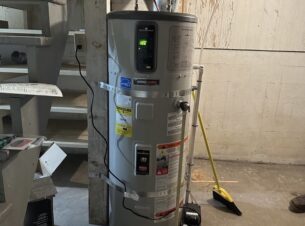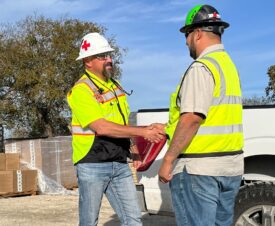The construction industry, characterized by its large-scale operations and reliance on hardy materials, may seem worlds apart from the precision-driven field of machining. However, the lines between these two industries are beginning to blur, paving the way for a new paradigm in the realm of construction.
Traditionally, machining has been associated with the creation of small, intricate parts in sectors such as aerospace, automotive, or electronics. This process involves the controlled removal of material from a workpiece to create a specific shape or structure, often requiring a high level of precision and accuracy. On the other hand, the construction industry has primarily been about assembling structures on a large scale, usually on-site and often involving significant manual labor.
However, as technological advancements permeate both fields, a fusion of construction and machining is emerging. This convergence is largely driven by the growing recognition of machining’s potential in enhancing the quality, efficiency, and safety of construction processes.
In this new paradigm, elements of a structure are often machined off-site in a controlled environment before being transported and assembled at the construction site. This approach, known as off-site construction or prefabrication, is gaining traction for its ability to reduce waste, increase precision, and improve working conditions.
Within the realm of machining, various techniques are finding their place in construction, from milling and drilling to more sophisticated processes like curve generation. This integration of machining into construction is not just transforming how structures are built, but it is also redefining the boundaries of what is possible in the industry. Let’s delve deeper into how this fusion is playing out in specific areas of construction.
Enhancing Structural Integrity and Durability with Precision Machining
Structural integrity and durability form the backbone of any construction project. Here, precision machining techniques are beginning to prove invaluable by offering a degree of control and accuracy previously unattainable in traditional construction processes.
One of the primary benefits of employing machining techniques in construction is the ability to create components with incredibly high precision. These techniques can produce parts with tight tolerances, meaning they fit together with minimal gaps or overlaps. This precision ensures a more secure fit and greater stability in the final structure, resulting in improved structural integrity.
Furthermore, machining processes can enhance the durability of construction components. By precisely controlling the material removal process, machining can minimize defects or inconsistencies in the components, which could otherwise compromise their strength or longevity. For instance, machined steel or aluminum parts for load-bearing structures can be produced with specific properties, such as thickness and hardness, to meet exact design specifications and withstand predefined loads.
Machining can also introduce features that improve the functionality and lifespan of construction components. For example, the process can create specific surface textures or finishes that can enhance a material’s resistance to environmental factors such as moisture, temperature fluctuations, or corrosive agents.
Additionally, the incorporation of precision machining in the production of custom fasteners and fittings used in construction ensures a high-quality connection between different parts of a structure, further enhancing its overall stability and durability.
The Role of Curve Generation in Construction
In the realm of architecture and construction, the demand for designs featuring intricate curves and complex geometric patterns has been on the rise. Realizing these designs in physical structures, however, presents a significant challenge. This is where the application of advanced machining techniques, particularly curve generation, comes into play.
Curve generation is a fundamental process in machining that involves the creation of a curve on the surface of a workpiece by toolpath control. It is commonly used to manufacture gears, camshafts, and other components requiring specific, accurate curves in industries like automotive and aerospace. Yet, its value extends beyond these traditional applications and is increasingly recognized in the field of construction.
The introduction of curve generation in construction has revolutionized the way complex architectural designs are realized. By employing computer numerical control (CNC) machines capable of curve generation, it is possible to fabricate construction components with precise, intricate curves and shapes, thus enabling the translation of complex architectural designs from blueprint to reality
For instance, in the creation of custom molds for concrete or architectural façade elements, curve generation can help to produce components with specific, intricate designs. This can bring a unique aesthetic appeal to buildings, contributing to a distinctive architectural identity.
Moreover, curve generation can play a crucial role in constructing efficient structural elements, such as curved beams or arches, that distribute loads more evenly and thereby improve structural stability. These components, crafted with a high level of precision, not only enhance the structure’s aesthetics but also its functionality and durability.
Improved Efficiency and Safety
The integration of advanced machining techniques into construction practices is creating a ripple effect, leading to notable improvements in both efficiency and safety – two critical factors in any construction project.
Efficiency in construction often translates to reduced costs, streamlined operations, and shorter project timelines. Machining techniques, particularly when automated, can significantly enhance the efficiency of the construction process. For instance, using CNC machines for curve generation or other complex tasks can significantly reduce the time required to produce custom components. Automation also reduces human error, leading to a lower rate of faulty parts and rework.
Moreover, machining allows for off-site fabrication of components. This can reduce on-site work, minimize disruptions, and streamline the construction timeline. Off-site fabrication also enables better quality control, as components are manufactured in a controlled environment before they are transported to the construction site.
In addition to efficiency, machining techniques also contribute to improving safety in the construction industry. By minimizing the need for manual handling and on-site adjustments of components, machining reduces the potential for workplace accidents. It also alleviates the need for workers to perform tasks in hazardous conditions, such as high heights or in poor weather, as more elements of a structure are prefabricated off-site.
Furthermore, precision machining can contribute to the long-term safety of the built structures. By enabling high-quality, precise components, machining techniques can enhance structural stability, potentially reducing the risk of structural failure over time.
A Look at Future Possibilities
As we delve deeper into the integration of advanced machining techniques in the construction industry, it becomes clear that we are only at the dawn of a significant shift. The future possibilities are vast and hold the potential to redefine the landscape of construction as we know it.
The growing demand for sustainable and energy-efficient buildings may drive further innovations in the application of machining techniques. For instance, machining could play a vital role in creating components for passive solar buildings or smart homes, where precise design and manufacturing are crucial.
Additionally, the increasing adoption of advanced materials in construction, such as composite materials or smart glass, will likely necessitate further advancements in machining techniques. Machining these materials with precision will enable us to harness their full potential in a construction context, contributing to both the functionality and aesthetic appeal of modern buildings.
The future may also see a greater fusion of digital technologies, like 3D modeling and CNC machining. This fusion could enable more seamless workflows, from design to fabrication, and allow for an even greater level of precision and customization in construction projects.
Moreover, as automation and AI technologies continue to evolve, we could see further enhancements in the efficiency and safety benefits provided by machining in construction. Imagine construction sites where automated machining systems work alongside human operators, delivering components just in time and with pinpoint accuracy.
In conclusion, as the construction industry continues to adopt and integrate machining techniques, we can expect to witness a significant evolution in how structures are designed, built, and maintained. These advanced manufacturing techniques are not just enhancing the quality and efficiency of construction; they are pushing the boundaries of what’s possible, setting the stage for a future where construction is more precise, more efficient, safer, and more innovative than ever before.




Join the conversation: